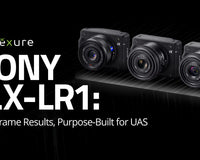In the rapidly evolving world of UAS, understanding the nuances of different sensor technologies as it applies to your particular industry or use cases is important. There's a common misconception that thermal and infrared (IR) technologies are interchangeable concepts.
This confusion, while understandable, can lead to suboptimal choices when selecting sensors for your specific applications. While both are technologies used for detecting and measuring thermal energy, understanding the differences will help you make informed buying decisions in your commercial or enterprise UAS operations.
What is Thermal Imaging?
Thermal imaging, or infrared thermography, captures heat emitted by objects. This passive technology relies on mid- or long-wavelength IR energy. Thermal cameras detect this radiation and convert it into visual thermograms. Key applications include industrial inspections, wildlife research, and firefighting. Thermal imaging's strength lies in its ability to function in smoke, fog, or total darkness, detecting heat signatures typically displayed in contrasting colors like black (cold) and white (hot).
What is Infrared?

Infrared technology, on the other hand, operates in the spectrum beyond visible light. It encompasses a broader range, from near-infrared (NIR) with short wavelengths to far-infrared with longer wavelengths. Infrared devices can be either active or passive:
Active IR Systems
These use short-wavelength IR light to illuminate an area, reflecting back to the camera to create an image. This form of IR is common in night vision applications, where low light levels are enhanced or supplemented by an active source.
Near-Infrared (NIR) Imaging
NIR, the shortest wavelength in the IR spectrum, is used in drones for applications like agriculture, security, and environmental monitoring. NIR imaging captures reflected or absorbed light and requires either ambient lighting or an active source in complete darkness.
The Key Differences and Why it Matters
Understanding the distinction between thermal and infrared technologies is critical when choosing the right sensor for a UAS platform. While both operate on the infrared spectrum, their applications and capabilities vary significantly. For instance, in search and rescue operations, thermal imaging's ability to detect human or animal heat signatures, even through obscurants, can be life-saving. In contrast, infrared might be more suited for precision temperature measurements in industrial contexts.
Knowing which technology aligns with your specific needs enhances the effectiveness and efficiency of your UAS operations. It's not just about having advanced technology; it's about having the right technology and knowing how to use it in the field.
Thermal Imaging
Ideal for detecting living beings or mechanical heat emissions in challenging visibility conditions like smoke or fog.
Active IR and NIR
Better suited for precision imaging in low-light conditions, and in applications like agriculture for crop health monitoring, and environmental studies.
Conclusion
At Advexure, we recognize the significance of integrating the right UAS technology into your operations. With our expertise in thermography and infrared technologies, we can guide you in making informed decisions, ensuring your UAS solutions align perfectly with your operational needs.
Whether your focus is on industrial inspections, environmental monitoring, or public safety, Advexure is here to help. Reach out to us for customized solutions that leverage the distinct advantages of thermal, active IR, and NIR technologies.









